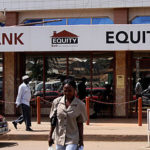Uganda’s economic performance generally remained strong despite the recent slowdown in real GDP growth, which is projected to reach 5.9% in 2018, up from 4.8% in 2017 and 2.3% in 2016, the Uganda Economic Outlook 2018 indicates.
According to the report, the increase in economic growth in 2018 is expected to be driven mainly by public infrastructure investment; recovery in manufacturing and construction and improvements in the services sector, particularly finance and banking, trade, transport, and information and communication technology services.
Macroeconomic evolution
The Economic Outlook report says Uganda pursued a cautious expansionary fiscal policy stance to support key infrastructure projects in transport and energy, while keeping recurrent expenditure under control. The overall budget deficit was slightly high in 2016, improved in 2017, and is projected to increase in 2018 and 2019.
It notes that Uganda’s balance of payments deteriorated, mainly as the result of external economic headwinds, including low commodity prices due to slow growth in Europe and China and tightening global financial and monetary conditions. “The macroeconomic policy stance remains focused on containing inflationary pressures, enhancing exchange rate stability, and stepping up domestic resource mobilization growth by 0.5 percentage point of GDP,” it says.
It says that Uganda continues to have a low risk of debt distress. However, the debt-to GDP ratio is increasing and is projected to reach 38.6% of GDP in 2016 and 45% by 2020 from 34.1% in 2014. “At these growth rates, the debt burden is growing faster than government resources; the revenue-to-GDP ratio stands at only 13.4%,” it warns. It however, says the most recent International Monetary Fund and World Bank Group debt sustainability analysis in 2016 gives Uganda’s risk of debt distress a low rating.
Tailwinds
Meanwhile, the report indicates that Uganda’s main tailwinds for the 2018 Economic Outlook include increased agricultural production due to better weather conditions; higher foreign direct investment (FDI) flows following the recent issuance of oil exploration licenses; and the expected decision by the government to invest in oil infrastructure development in early 2018, given the projected increase in oil prices to an average of $55 a barrel in 2017–18 from $43 a barrel in 2016.
Headwinds
It adds that the major external risks to Uganda’s economic performance include low commodity prices and demand for the country’s exports in major markets, appreciation of the U.S. dollar due to expected monetary tightening by the United States, tightening of global financing conditions that could discourage FDI and development assistance, adverse spillover shocks from fragile regional neighbors, and adverse environmental shocks.
“Major internal risks include reduced domestic revenue mobilization and higher public spending on contingencies, poor institutional capacity and governance, and weak public financial and investment management systems,” the report indicates.
Uganda’s debt-to-GDP ratio remains above 50 percent, the report says, warning that unless measures are implemented by government to curtail growth in debt, the country could face an implosion in the stock of external debt and servicing costs.






